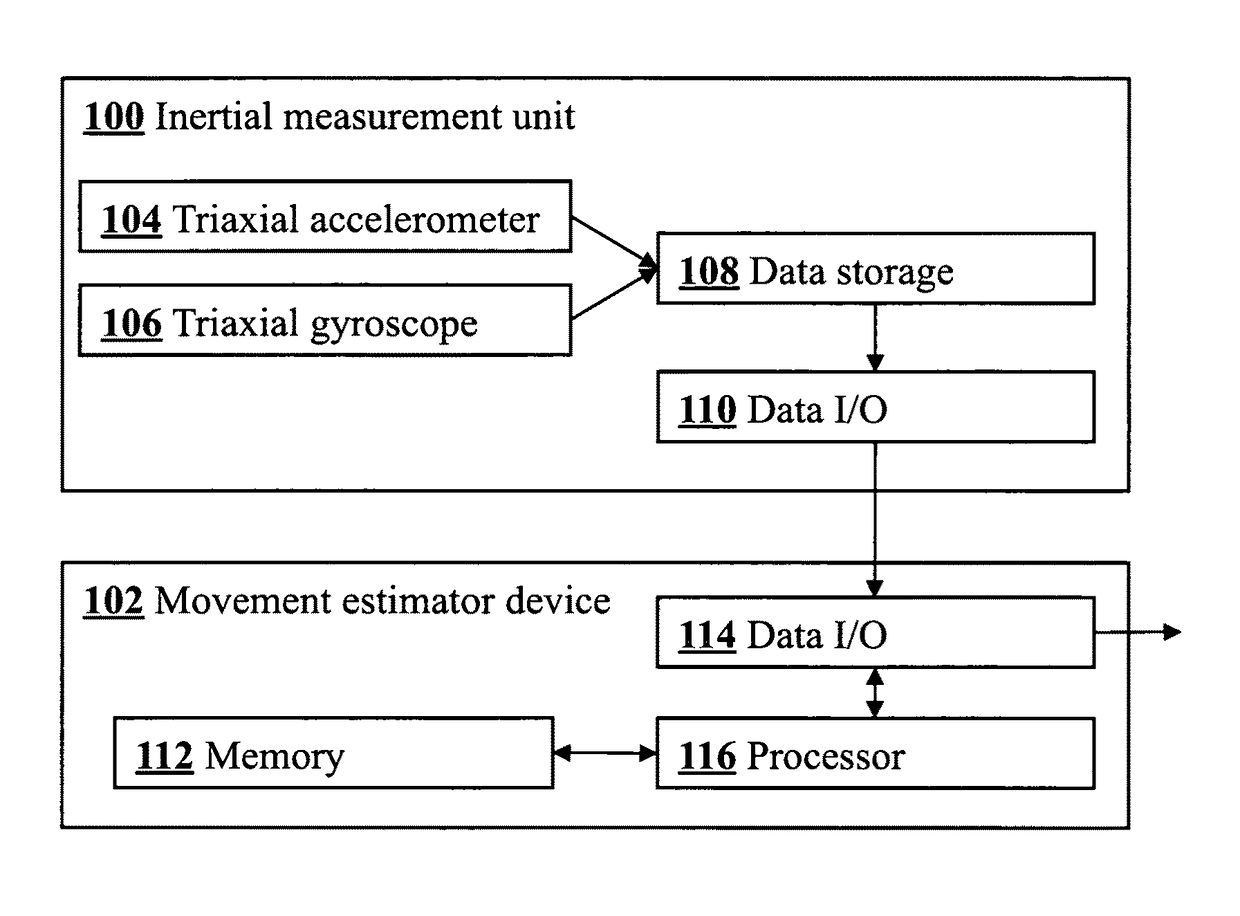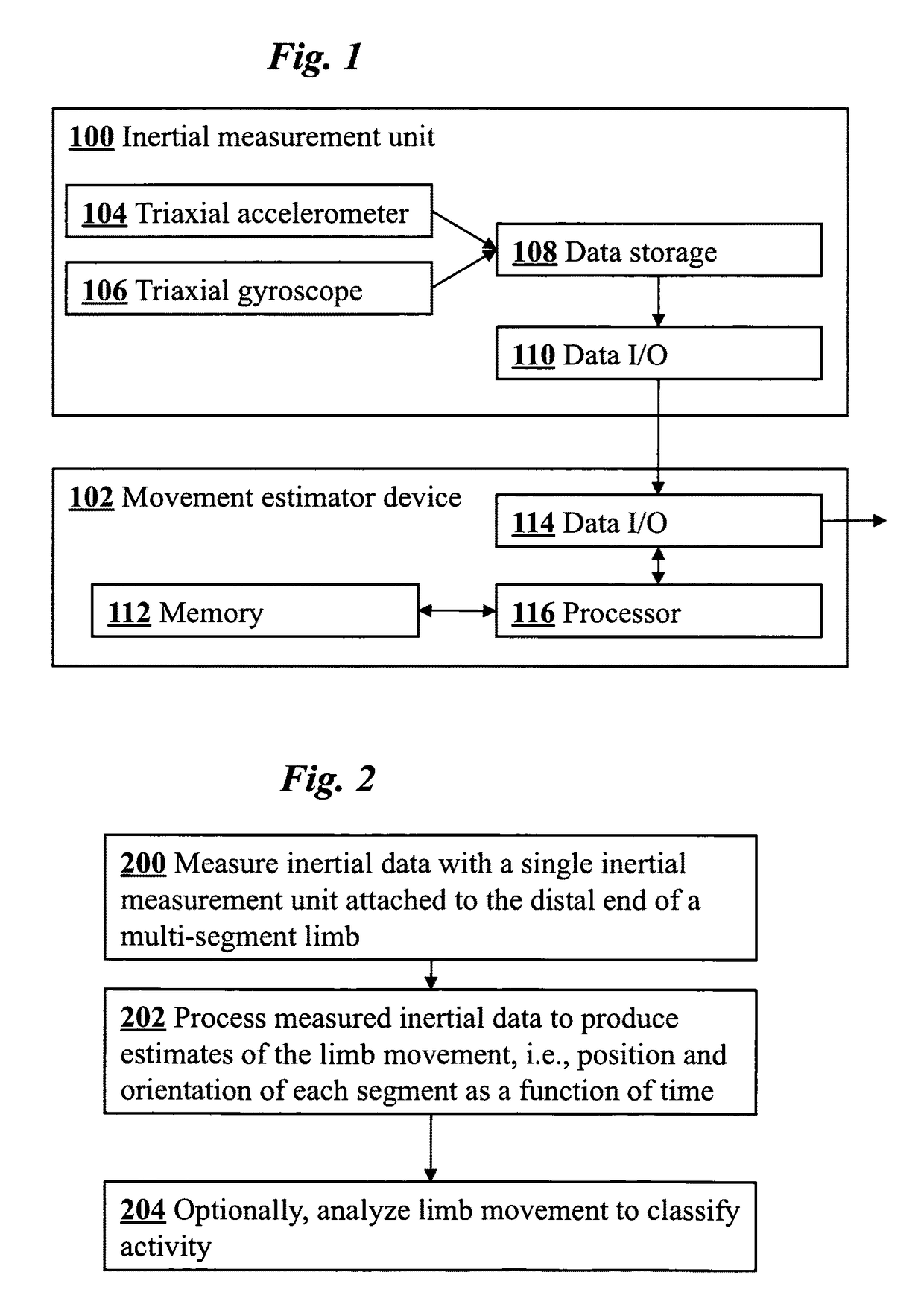Joint angle tracking with inertial sensors
a technology of inertial sensor and joint angle, applied in the field of joint angle tracking with inertial sensor, can solve the problems of inability to accurately tracking errors, and inability to adjust the integration level, so as to reduce the cost, increase the ease of use, and accurate estimate and track the orientation
- Summary
- Abstract
- Description
- Claims
- Application Information
AI Technical Summary
Benefits of technology
Problems solved by technology
Method used
Image
Examples
Embodiment Construction
[0018]FIG. 1 is a block diagram of a system for movement estimation according to one embodiment of the invention. The system includes an inertial measurement unit 100 and a movement estimator device 102. Preferably, IMU 100 includes a triaxial accelerometer 104 and triaxial gyroscope 106. In other embodiments, IMU 100 may alternatively or additionally include magnetometers or other sensor types. The sensors 104 and 106 generate inertial data representative of the physical movement of a bodily limb. The data is stored in data storage module 108, such as flash memory. A data input / output component 110 provides an interface to communicate the stored inertial data from the IMU 100 to movement estimator 102, either in real time or off-line via a conventional wired or wireless data link.
[0019]Movement estimator 102 includes a memory 112, data input / output interface 114, and processor 116. In one embodiment, movement estimator 102 is a desktop computer. Alternatively, movement estimator 10...
PUM
 Login to View More
Login to View More Abstract
Description
Claims
Application Information
 Login to View More
Login to View More - R&D
- Intellectual Property
- Life Sciences
- Materials
- Tech Scout
- Unparalleled Data Quality
- Higher Quality Content
- 60% Fewer Hallucinations
Browse by: Latest US Patents, China's latest patents, Technical Efficacy Thesaurus, Application Domain, Technology Topic, Popular Technical Reports.
© 2025 PatSnap. All rights reserved.Legal|Privacy policy|Modern Slavery Act Transparency Statement|Sitemap|About US| Contact US: help@patsnap.com



